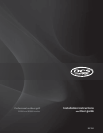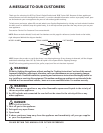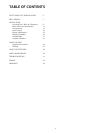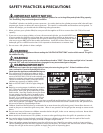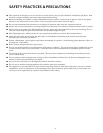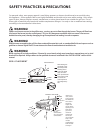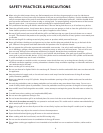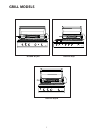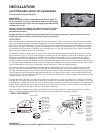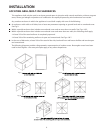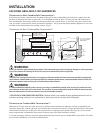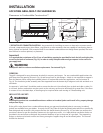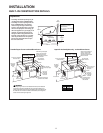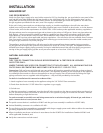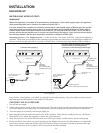Special offers from our partners!

Find Replacement BBQ Parts for 20,308 Models. Repair your BBQ today.
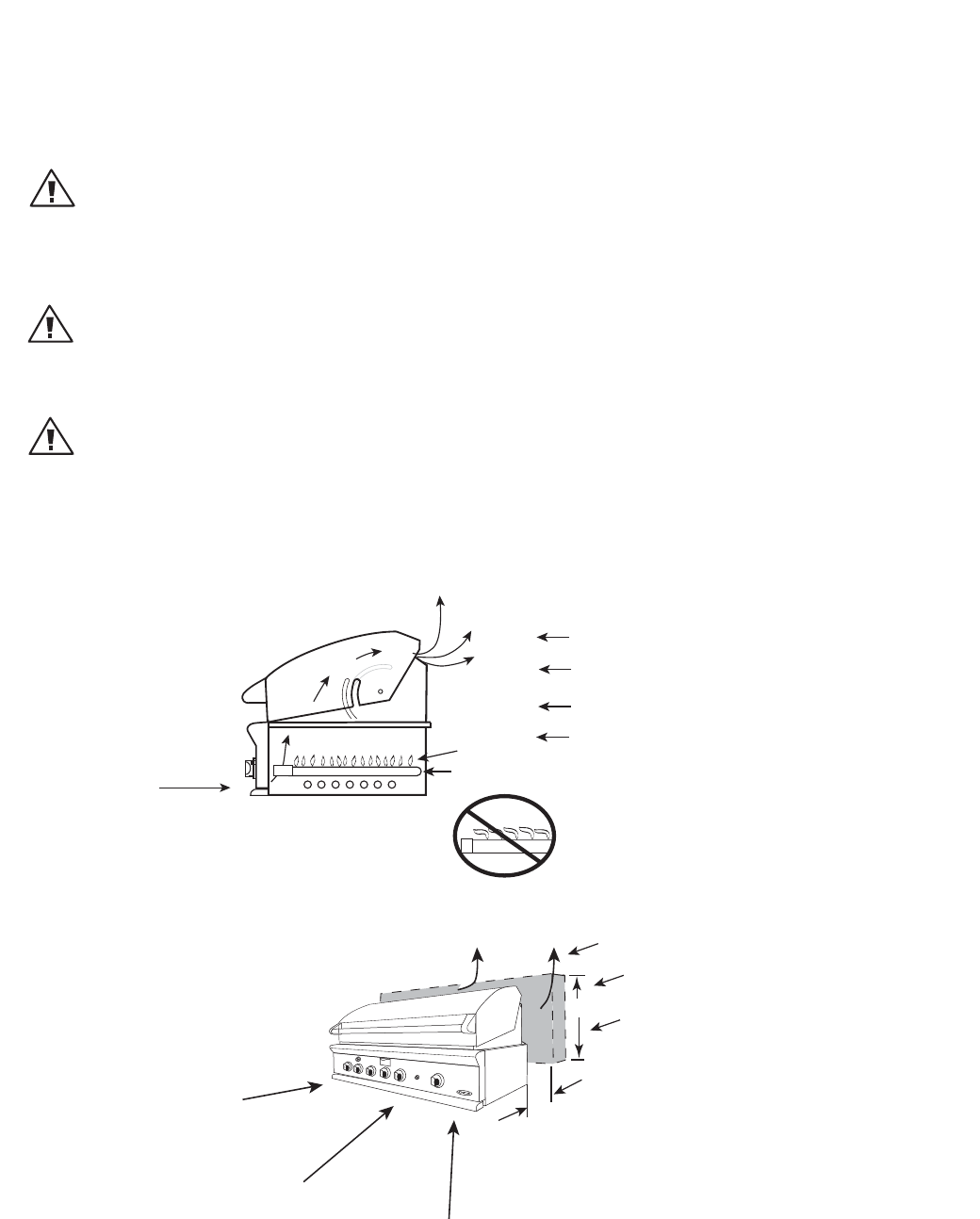
SAFETY PRACTICES & PRECAUTIONS
For personal safety, wear proper apparel. Loose fitting garments or sleeves should never be worn while using
this appliance. Some synthetic fabrics are highly flammable and should not be worn while cooking. Only certain
types of glass, heat-proof glass ceramic, earthenware, or other glazed utensils are suitable for grill use. Use of
these types of materials may break with sudden temperature changes. Use only on low or medium heat settings
according to the manufacturer’s directions.
WARNING!
Spiders and insects can nest in the grill burners , causing gas not to flow through the burner. The gas will flow from
the front of the burner into the control panel. This is a very dangerous condition which can cause a fire to occur
behind the valve panel, thereby damaging the grill components and making it unsafe to operate.
WARNING!
Keep the area surrounding the grill free from combustible materials, trash, or combustible fluids and vapours such as
gasoline or charcoal lighter fluid. Do not obstruct the flow of combustion and ventilation air.
WARNING!
Never use the grill in windy conditions. If located in a consistently windy area (oceanfront, mountaintop, etc.) a wind
break will be required. Always adhere to the specified clearances as defined in the “INSTALLATION” section of this
manual.
GRILL PLACEMENT
PREFERRED
AIR FLOW
GRILL EXHAUST
EXHAUST
FLAME
BURNER
Wind hitting the
grill while in use,
especially winds
blowing into or
across this hood
gap, can cause
poor performance
and in some cases
can cause the
control panel to
get dangerously
hot.
If wind is an
issue, a wind
screen should
be added. The
wind screen
should be
higher than
the top of the
opening in the
back of the
grill, with a
minimum
clearance of
76 mm (for
non-combusti
bles) or 310
mm (for
combustibles)
from the back
of the grill
WIND SCREEN
WIND
min. 381 mm
min. 76 mm
for non-
combustibles
min. 310 mm for
combustibles
WIND
WIND
PRIMARY
INTAKE
AIR FLOW
EXHAUST VENT FLOW
FLAME LIFT
5



